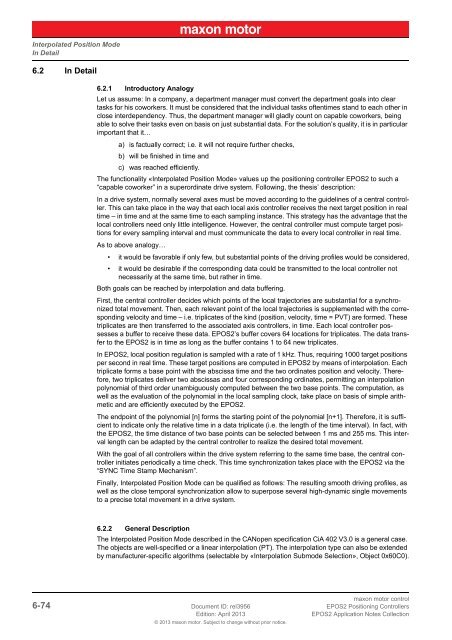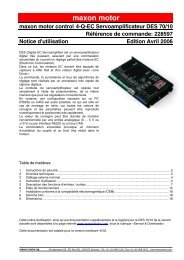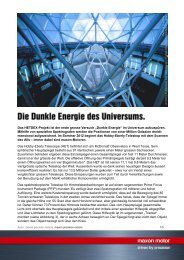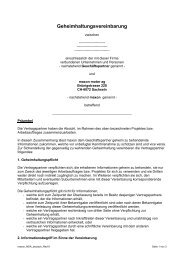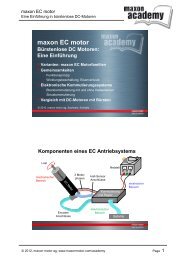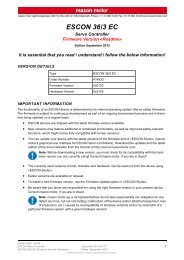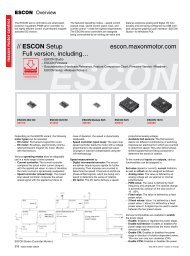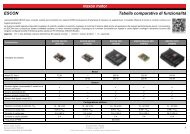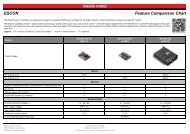EPOS2 Application Notes Collection - Maxon Motor
EPOS2 Application Notes Collection - Maxon Motor
EPOS2 Application Notes Collection - Maxon Motor
Create successful ePaper yourself
Turn your PDF publications into a flip-book with our unique Google optimized e-Paper software.
Interpolated Position Mode<br />
In Detail<br />
6.2 In Detail<br />
6.2.1 Introductory Analogy<br />
Let us assume: In a company, a department manager must convert the department goals into clear<br />
tasks for his coworkers. It must be considered that the individual tasks oftentimes stand to each other in<br />
close interdependency. Thus, the department manager will gladly count on capable coworkers, being<br />
able to solve their tasks even on basis on just substantial data. For the solution’s quality, it is in particular<br />
important that it…<br />
a) is factually correct; i.e. it will not require further checks,<br />
b) will be finished in time and<br />
c) was reached efficiently.<br />
The functionality «Interpolated Position Mode» values up the positioning controller <strong>EPOS2</strong> to such a<br />
“capable coworker” in a superordinate drive system. Following, the thesis’ description:<br />
In a drive system, normally several axes must be moved according to the guidelines of a central controller.<br />
This can take place in the way that each local axis controller receives the next target position in real<br />
time – in time and at the same time to each sampling instance. This strategy has the advantage that the<br />
local controllers need only little intelligence. However, the central controller must compute target positions<br />
for every sampling interval and must communicate the data to every local controller in real time.<br />
As to above analogy…<br />
• it would be favorable if only few, but substantial points of the driving profiles would be considered,<br />
• it would be desirable if the corresponding data could be transmitted to the local controller not<br />
necessarily at the same time, but rather in time.<br />
Both goals can be reached by interpolation and data buffering.<br />
First, the central controller decides which points of the local trajectories are substantial for a synchronized<br />
total movement. Then, each relevant point of the local trajectories is supplemented with the corresponding<br />
velocity and time – i.e. triplicates of the kind (position, velocity, time = PVT) are formed. These<br />
triplicates are then transferred to the associated axis controllers, in time. Each local controller possesses<br />
a buffer to receive these data. <strong>EPOS2</strong>’s buffer covers 64 locations for triplicates. The data transfer<br />
to the <strong>EPOS2</strong> is in time as long as the buffer contains 1 to 64 new triplicates.<br />
In <strong>EPOS2</strong>, local position regulation is sampled with a rate of 1 kHz. Thus, requiring 1000 target positions<br />
per second in real time. These target positions are computed in <strong>EPOS2</strong> by means of interpolation. Each<br />
triplicate forms a base point with the abscissa time and the two ordinates position and velocity. Therefore,<br />
two triplicates deliver two abscissas and four corresponding ordinates, permitting an interpolation<br />
polynomial of third order unambiguously computed between the two base points. The computation, as<br />
well as the evaluation of the polynomial in the local sampling clock, take place on basis of simple arithmetic<br />
and are efficiently executed by the <strong>EPOS2</strong>.<br />
The endpoint of the polynomial [n] forms the starting point of the polynomial [n+1]. Therefore, it is sufficient<br />
to indicate only the relative time in a data triplicate (i.e. the length of the time interval). In fact, with<br />
the <strong>EPOS2</strong>, the time distance of two base points can be selected between 1 ms and 255 ms. This interval<br />
length can be adapted by the central controller to realize the desired total movement.<br />
With the goal of all controllers within the drive system referring to the same time base, the central controller<br />
initiates periodically a time check. This time synchronization takes place with the <strong>EPOS2</strong> via the<br />
“SYNC Time Stamp Mechanism”.<br />
Finally, Interpolated Position Mode can be qualified as follows: The resulting smooth driving profiles, as<br />
well as the close temporal synchronization allow to superpose several high-dynamic single movements<br />
to a precise total movement in a drive system.<br />
6.2.2 General Description<br />
The Interpolated Position Mode described in the CANopen specification CiA 402 V3.0 is a general case.<br />
The objects are well-specified or a linear interpolation (PT). The interpolation type can also be extended<br />
by manufacturer-specific algorithms (selectable by «Interpolation Submode Selection», Object 0x60C0).<br />
maxon motor control<br />
6-74 Document ID: rel3956 <strong>EPOS2</strong> Positioning Controllers<br />
Edition: April 2013<br />
<strong>EPOS2</strong> <strong>Application</strong> <strong>Notes</strong> <strong>Collection</strong><br />
© 2013 maxon motor. Subject to change without prior notice.


